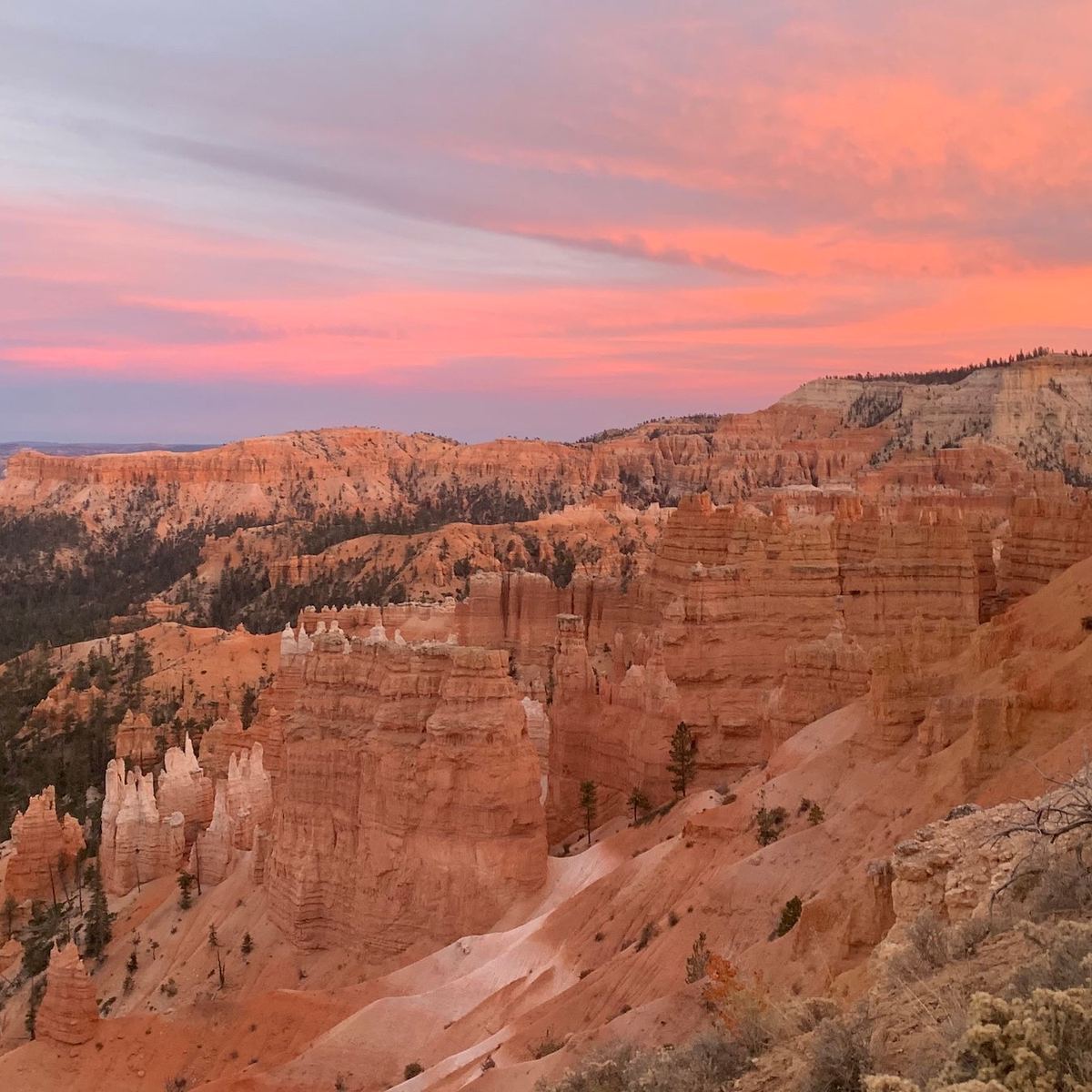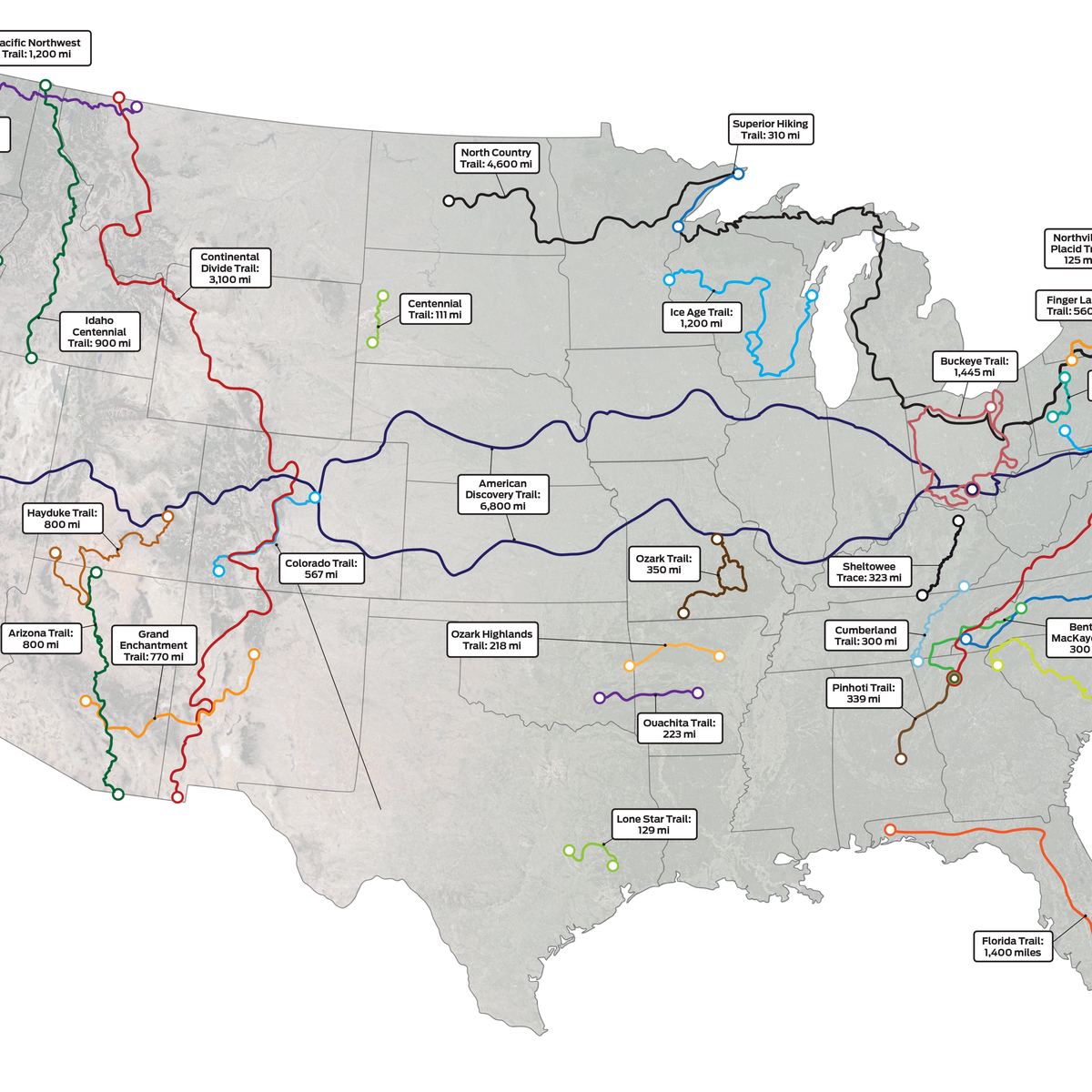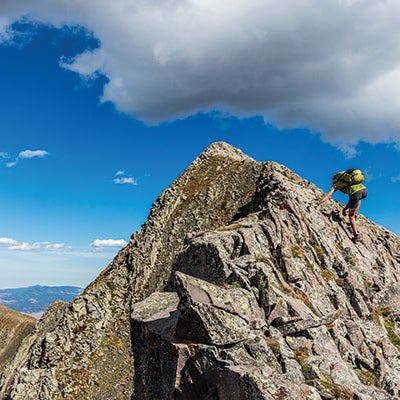America’s Best Wildflower Hikes
America’s Best Wildflower Hikes
These four trails deliver bountiful backcountry blooms.
Heading out the door? Read this article on the new Outside+ app available now on iOS devices for members! Download the app.
While long summer days understandably get folks revved up to walk fast and far, this is also the best season to slow down and appreciate the wonder of ecosystems at their most vibrant. In other words: If you want to really enjoy summer’s finest, consider plotting your next hikes around wildflower-peeping. This cross-country road trip hits the best spots for blooms from late June through early September, with stops in the East, Midwest, Mountain West, and West Coast. We’re not saying you have to hit them all, but why not? It’ll make for an unforgettable—and extremely colorful—summer tour.
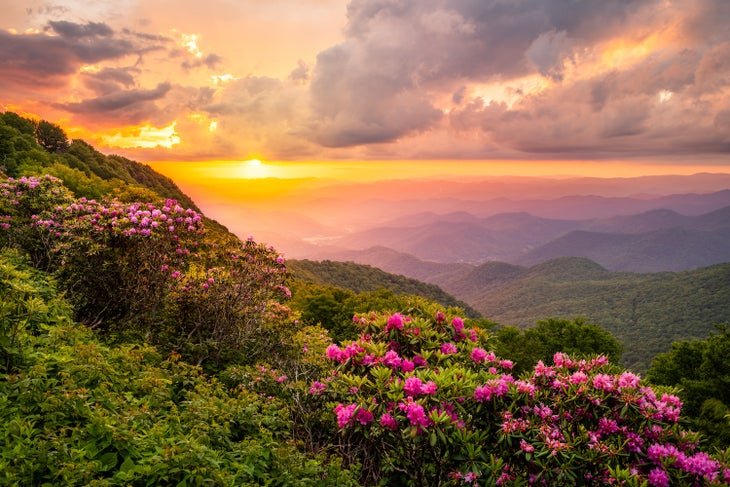
Late June through early July: North Carolina
The Blue Ridge Mountains deservedly get a ton of press for their displays of fall color, but if you leave now (yes, rightnow) you can catch the tail end of rhododendron season. These flowering shrubs—which can grow to the height of small trees—speckle the highlands and balds of North Carolina with giant, multi-flower blooms from June through early July. Rhododendrons come in many varieties, all of which lend their own special pop to the landscape: pink-purple Catawba, white rosebay, and striking orange azalea. In some areas, the plants grow so large and dense they form fairytale-like tunnels.
See For Yourself: Profile Trail up Grandfather Mountain, Grandfather Mountain State Park
Yes, there is a road up this charmingly named peak right off the Blue Ridge Parkway. But this hike, which starts from the Profile Trailhead next to Linville Gap, eschews pavement as it ascends through lowland forest, up switchbacks, and across a skyline ridge to the summit. Along the 5.2-mile (one way), 2,400-foot ascent, you’ll pass through groves of Catawba and rosebay, and you might even spy some mountain laurel. Tag the optional summit of 5,964-foot Calloway Peak on the way, and park a shuttle car at the top if you’re pressed for time.
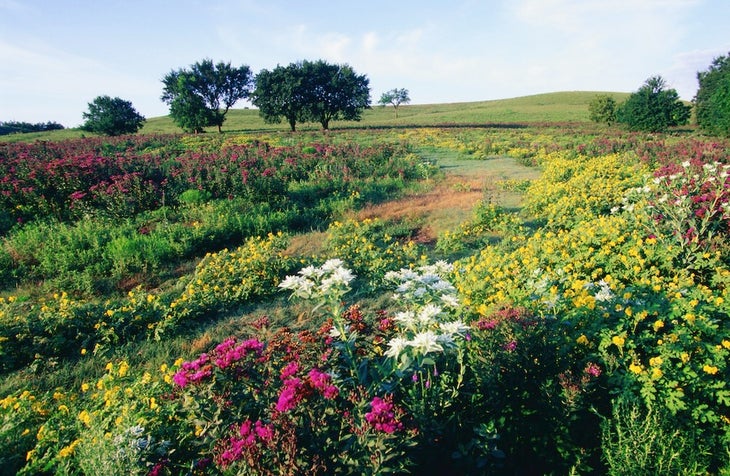
Early July through late August:Kansas
The prairie might not be the first place you picture when you think of bloom-covered vistas, but flowering plants account for a significant percentage of this region’s biodiversity. Untouched prairie is rare—less than 4 percent remains out of the 265,000 square miles that used to blanket America’s heartland—but the Tallgrass Prairie National Preserve in Kansas is an 11,000-acre gem that showcases this biome’s most eye-catching seasonal blossoms.
See For Yourself: Scenic Overlook to Davis Trail, Tallgrass Prairie National Preserve
The 7.5-mile loop linking the Tallgrass Scenic Overlook and Davis Trail features some of the most iconic local flora: Be on the lookout for vibrant magenta poppy mallow and the delicate pink trumpets of wild bergamot. If you’re lucky, you’ll also spot the fuzzy, white flowers of narrow-leaf bluets and, of course, wild sunflowers. (All these plants bloom between July and September.) Make sure to lift your yes every once in a while, though: Tallgrass has a resident bison herd lends the preserve a little extra back-in-time magic.
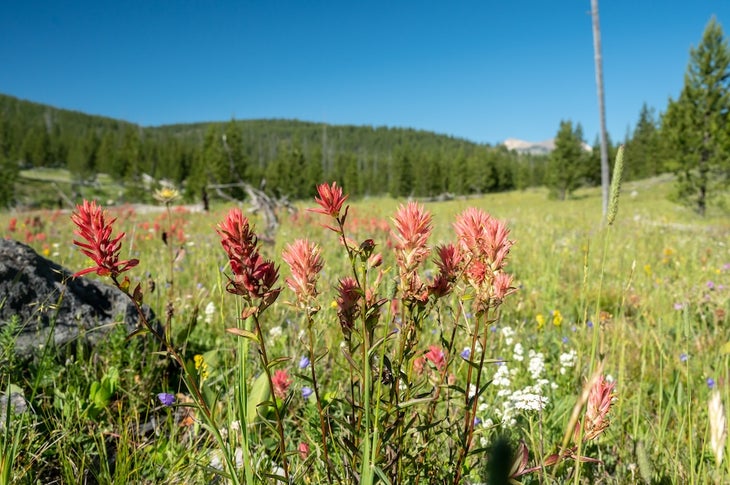
Late July through Mid-August: Wyoming
As you leave the flatlands behind, it’s time to head into the alpine. The mountain ranges surrounding Jackson, Wyoming, burst into bloom as summer reaches its local peak from mid-July to early August, and there’s no better time to explore this area’s blend of rock, sky, and stunning flora. But while the crowds might flock to Grand Teton National Park, we recommend taking a stroll through the Gros Ventres Wilderness, which usually sees more traffic from bears and elk than from humans. Split the 18.7-mile loop below into a two-day backpack and savor the mid-summer scenery.
See For Yourself: Shoal Creek-Swift Creek Loop, Gros Ventre Wilderness
Hiking counter-clockwise from the Swift Creek Trailhead, link the Jack Pine, Shoal Creek, and Swift Creek trails (camp 10.5 miles in at Shoal Lake, an edenic place to pitch a tent and fish for trout). You’ll be engulfed in shoulder-height meadows of alien-like horsemint giant hyssop and fireweed down in the drainages, but the wow factor increases once you crest onto the 10,000-foot Gros Ventre plateau. Here, traipse through fields of paintbrush, which range from Ferrari-red to sulfur-green. Also be on the lookout for clumps of purple elephant’s heads, which look exactly how they sound.
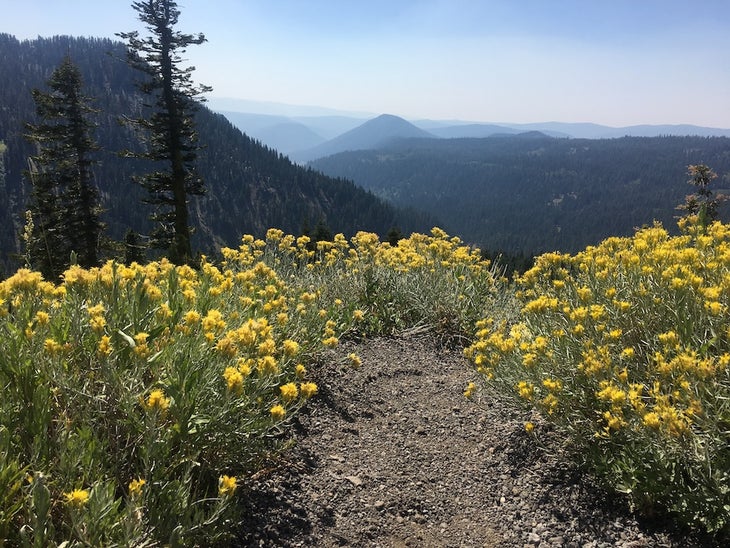
Mid-August through early September: California
End your flower-filled summer with a trip to the West Coast. The forests that cover the mid-elevation slopes of Lassen Peak in northeast California are home to a panoply of blooms that take nourishment from the ash-infused soil of this active volcano. Lassen’s north-facing aspects (such as the ones you’ll walk through on the hike below) melt out later than the rest of the mountain, so a number of the plants in those areas don’t flower until August and September.
See For Yourself: Shadow Lake via Paradise Meadows Trail, Lassen Volcanic Wilderness
In just 3.4 miles (one way), the trail that stretches from the Hat Creek Trailhead up to Shadow Lake traverses mixed-conifer forest, stream-braided meadows, and three idyllic tarns. Take your time along the way to savor Lassen’s latecomers: Bright-yellow Bloomer’s goldenbush, the wonderfully named mountain coyote mint, and tundra aster with its complementary purple petals and yellow center. The star of the show, though, might be bluntlobe lupine: native to the Northern California high country, its purple-blue flowers and silvery leaves can cover entire meadows in carpets of sparkling color.
From 2024
